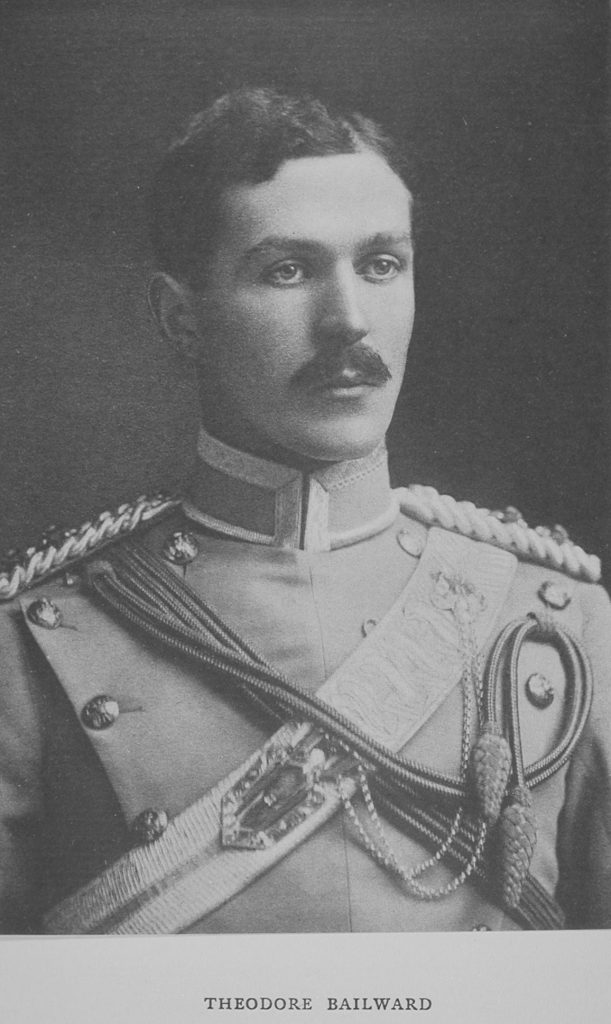
De Pass F A Lt VC Indian Army
LIEUTENANT F. A. DE PASS VC
34th PRINCE ALBERT VICTOR’S OWN POONA HORSE
FRANK ALEXANDER DE PASS was the second son of Eliot Arthur and Beatrice de Pass, of Queen’s Gate Terrace, London.
He entered the School in 1901 and passed third into the R.M.A., Woolwich, in 1904. He obtained his Commission in the Royal Field Artillery in January, 1906, and was promoted Lieutenant in 1909. In this year, his Battery being stationed in India, he applied for and obtained a Commission in the 34th Poona Horse. In November, 1913, he was appointed Orderly Officer to the Chief of the Staff in India, with the local rank of Captain, but rejoined his Regiment on the outbreak of War and accompanied it to France in September, 1914.
He was killed near Festubert, in French Flanders, on November 25th, 1914, under circumstances which are described in the following report written two days later by the captain in command. For his conduct on this occasion he was subsequently mentioned in Despatches in January, and again in May, 1915, and was awarded the Victoria Cross in February, 1915. Age 27.
Report of the Captain in Command of Detachment of 34th Poona Horse:- “On arrival in the trenches at 4 am. on the 23rd, it was discovered that the enemy had driven a sap up to the parapet of that part of the trenches allotted to the Poona Horse. The enemy had blown in the main parapet and a breach of eight feet in length existed, leaving the trench exposed to rifle fire from the sap.”
“A troop was told off to hold the breach pending daylight, when a careful inspection could be made, with orders to erect a traverse at once, to cover themselves from rifle fire.”
“Lieut. de Pass asked permission to have the defence of this breach placed under his orders. The request was granted. As soon as it was daylight the O.C. Detachment Poona Horse inspected the breach, and, in order to ascertain what was in the sap called for a volunteer to enter and proceed along it toward enemy’s lines.”
“Sowar Abdullah Khan volunteered and entered the sap. He returned and reported that the enemy had erected a sandbag traverse about ten yards from the trenches at a point where the sap makes its first bend, and that a man with a rifle was at a loop-hole. At 8 a.m. the enemy commenced throwing bombs into our trenches from their side of this loop-holed traverse. This continued all day and caused several casualties.”
“Early on the morning of the 24th, Lieut. de Pass, accompanied by Sowars Fateh Khan and Firman Shah, entered the enemy’s sap, and, proceeding along it, Lieut. de Pass placed a charge of gun cotton in the enemy’s loop-hole, and fired the charge, completely demolishing the traverse and rounding off the bend sufficiently to expose the sap for some thirty yards to our rifle fire. While this was being done the enemy threw a bomb at Lieut. de Pass’s party, which fortunately missed and exploded behind them. “This action of Lieut. de Pass stopped all bomb throwing by the enemy during the 24th, and its effect can be better gauged by the fact that there was only one casualty that day, compared with six the day before, and nine the day after, when, under cover of darkness on the night of 24-25, the enemy replaced their loop-holed sandbag traverse.”
“The same day Lieut. de Pass, accompanied by a trooper of the 7th Dragoon Guards, went out in broad daylight and brought in a sepoy of the 58th Rifles, who was lying wounded in the rear of our trenches, at about 200 feet distance. Lieut. de Pass did not ask permission to do this but acted on his own initiative. Lieut. de Pass again volunteered to enter the enemy’s sap and blow up the traverse, but permission was refused.”
“About 3 p.m. on the 25th the bomb-throwing by the enemy became worse, and Lieut. de Pass went to the head of the sap to supervise repairs to our defences, which had been seriously impaired. He endeavoured to shoot the enemy’s sniper through a loop-hole, and in so doing was himself shot through the head. I consider that Lieut. de Pass’s conduct throughout was most intrepid, and that his actions were a magnificent example to the men of the Detachment.”
The Official record of the services for which he received the Victoria Cross was as follows:-Lieut. Frank Alexander de Pass (Killed), 34th Poona Horse.
“For conspicuous bravery near Festubert on the 24th November, in entering a German sap and destroying a traverse in the face of the enemy’s bombs, and for subsequently rescuing, under heavy fire, a wounded man who was lying exposed in the open. Lieutenant de Pass lost his life on this day in a second attempt to capture the aforementioned sap, which had been re-occupied by the enemy.”
* Private C. Cook, who, for this, was awarded the Distinguished Conduct Medal.
Source : Memorials Of Rugbeians Who Fell In The Great War Vol 1












